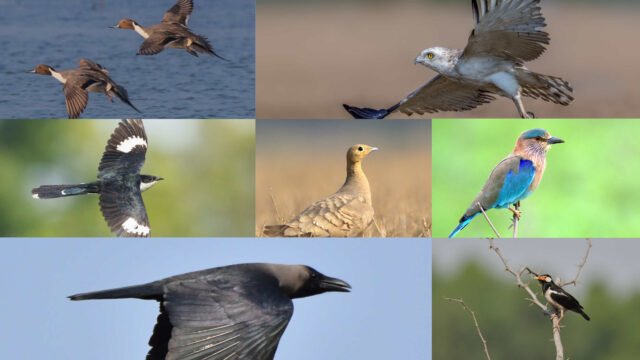Hyderabad: Telangana is home to at least 452 species of birds, according to a newly published scientific checklist that represents one of the most comprehensive avifaunal records for the state to date.
The study, authored by Prof. Chelmala Srinivasulu of Osmania University and Sriram Reddy of Hyderabad Birding Pals, was published in the Journal of Threatened Taxa on July 26.
Drawing on decades of field observations and contributions from citizen scientists, the paper underscores the ecological richness of Telangana while also sounding an alarm on the threats facing its bird populations.
First records and threatened species
Among the 452 species documented, the authors reported several rare and significant sightings, including the Spur-winged Lapwing, which marks a first record for India.
The checklist also includes globally threatened birds such as the Critically Endangered Indian Vulture and the Lesser Florican, species that highlight the conservation value of the region’s landscapes.
“Birds are excellent indicators of environmental health,” said Prof. Chelmala Srinivasulu, a wildlife biologist at Osmania University. “Our work not only corrects outdated records but also showcases Telangana’s hidden biodiversity-rich areas, from wetlands to forests, from grasslands to urban lakes.”
Citizen science and decades of observations
The checklist is the product of a long-term collaboration between researchers, amateur birders, and platforms like eBird and iNaturalist. The authors reviewed historical literature, verified sightings, and conducted fieldwork across different districts and habitats.
“This checklist is not just for scientists. It is for every nature lover, student, and amateur birder,” said Sriram Reddy, a Hyderabad-based birdwatcher and co-author of the study. “We invite people from all walks of life to take up birdwatching, not just as a hobby, but as a meaningful connection to our natural heritage.”
Policy recommendations and environmental education
The study warns of both direct and indirect threats to Telangana’s birdlife, including habitat loss, pollution, pesticide use, and urbanisation.
“We urge citizens to appreciate and protect the birds around them. The policymakers need to work in tandem with researchers and experts to prioritise habitat identification and conservation,” said Prof. Srinivasulu. “Our bird diversity and populations are declining, and it is imperative that we nurture a new generation of bird lovers.”
Institutional recognition
The work has received commendation from Osmania University.
“It is a very dedicated piece of work that comes out of passion and years of observation by two passionate birders,” said Prof. Kumar Molugaram, Vice-Chancellor of Osmania University. “The university fraternity appreciates the outcome of this research.”
The authors and university officials see this publication not just as a scientific document, but as a call to action.
“Birdwatching isn’t just about birds, it’s about seeing the world through a lens of wonder, curiosity, and care,” noted the university’s Public Relations Office in a closing statement.
The full paper is available through the Journal of Threatened Taxa, and the authors hope it will serve as a baseline for future avian research, conservation planning, and public engagement across Telangana.








